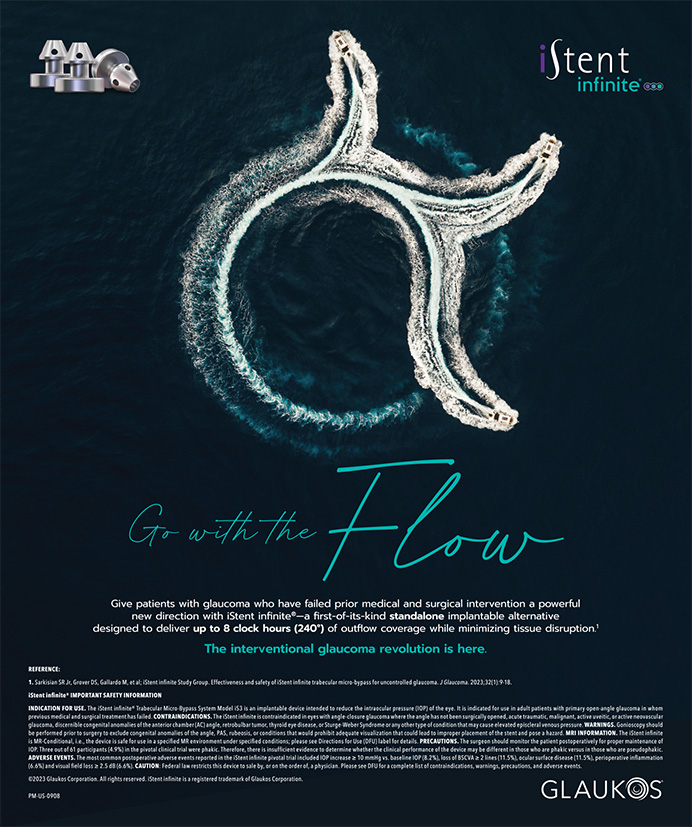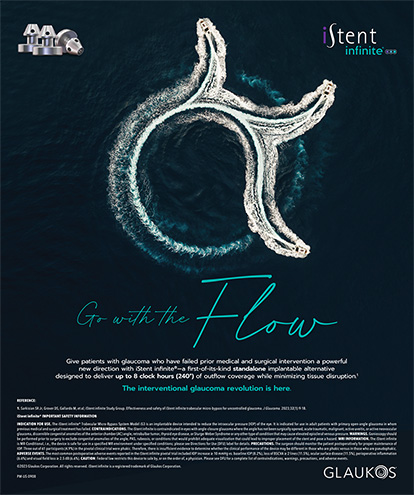As a resident, I initially wanted to be a retinal surgeon. The mentor who stole my imagination was Michael Shea, MD, of St. Michael’s Hospital in Toronto. He was a magnificent, imaginative, and creative retinal surgeon who seemingly could repair anything. He was also an incredible artist. His operative notes were hand-drawn, multicolored, three-dimensional artistic renditions of his surgery that could not have been bettered with a detailed, 10-page, written description. I was fortunate enough to spend a fascinating full year with him.
Then, I spent 4 months performing cataract surgery with, among others, William Samis, MD, FRCSC, one of the first surgeons in the world to adopt phacoemulsification and PCIOLs. At that time, most surgeons in Toronto performed intracapsular cataract extractions, and patients wore aphakic spectacles. The possibilities of smaller incisions, less astigmatism, quicker surgery and healing, PCIOLs, and so on converted me into a cataract surgeon seeing wonders in the future of my chosen field.
1978 as Dr. Samis’ resident. This patient sees 20/25 in the operated eye and rarely wears glasses. I stopped thinking of cataract surgery as simplistic after that operation, and as soon as I joined Dr. Samis in practice, I became a member of the worldwide group of innovators who were working hard to improve phaco results. Every operation was a work of art, and the field rapidly improved as the size of the incision shrank, IOLs became foldable and perfectly centered in capsulorhexes, suturing ceased, and we developed techniques with which to reduce astigmatism and nearly eliminate complications.
Today, I feel that every step in phacoemulsification is an artistic process, somewhat individualized for each patient (Figure 1). I also believe that the procedure produces the happiest patients in any medical or surgical practice, and I could not be happier with my career choice. I am not, however, enthusiastic about laser cataract surgery.
CHEAP SMALL-INCISION CATARACT SURGERY OR EXPENSIVE TECHNOLOGY TO REPLACE ART?
A new era has begun in cataract surgery. On one side are small-incision techniques from India, independent of expensive phaco machines, that promise to produce almost equivalent results but at 10% of the cost. On the other side are ever-more expensive devices manufactured to replace surgical skill with automation and mechanization. The first subtle attack came from multifocal and accommodating IOLs, which were designed—at high cost—to eliminate the art of inducing varying degrees of monovision based upon the patient’s visual expectations. Current studies have not demonstrated superior presbyopic correction with these lenses compared with monovision, but the former will undoubtedly prevail in the long run, thanks to continuing commercial promotion and a gradual improvement in the technology. Similarly, toric IOLs were developed to almost eliminate regular astigmatism and remove surgeons’ need to learn the difficult art of limbal relaxing incisions (LRIs). I expect that technical advances will ultimately allow these lenses to supplant LRIs.
THE NEW FEMTOSECOND LASERS: A PROMISE OR A THREAT?
The process of replacing art with technology accelerated with the commercial availability of femtosecond laser technology (Figure 2). Buy a unit and pay steep per-case fees, and the magical machine will create perfect incisions and capsulorhexes every time. Flawless LRIs and perfectly softened lenses (to minimize the skill needed in phacoemulsification) can also be purchased. Each case takes a bit longer to perform, but patients need no longer search for a Dr. Shea or Charles Kelman, MD. They only have to be willing to pay a corporation for the use of a magical box, and anybody can perform perfect cataract surgery. Phaco technology is already following a similar path. Every successive generation of machine demands less of the surgeon, as the technology does more.
WHEN WILL I PERFORM LASER PHACOEMULSIFICATION?
I see the field of cataract surgery headed down three pathways. The first will lead skillful surgeons to use cheap and simple devices to achieve excellent but imperfect results in the third world. The second and most common path in the developed world will be for corporations (or governments) to take over cataract surgery. They will encourage poorly paid surgeons or technicians to use expensive machinery to perform “cookie cutter,” nearly perfect cataract procedures. The ophthalmologist’s role will be reduced to diagnosis and the referral of straightforward cases. Unusual cases will be shunted to a few remaining academic centers that can handle them. The third path will be reserved for the rich, patients able to pay for one of the few remaining qualified cataract surgeons to use all of the expensive gadgets in a private center. The results may be slightly better than in a corporate center, but the environment will be more pleasant.
As a Canadian surgeon working in what is probably one of the most socialized systems in the world, I will likely be consigned to the second path and probably also the third. After all, Canada will have to allow some private care, or the country’s health care system will soon go bankrupt.
The new laser technologies are potentially revolutionary and certainly were undreamed of by most ophthalmologists even a decade ago. I confess, however, that I do not look forward to the styles of practice that I believe are likely to emerge. I remain hopeful that brilliant minds will find ways to make femtosecond laser technology specific and cheap. In that way, it could simply be added to increasingly complex phaco machines, which would enable skilled phaco surgeons to survive as independent practitioners and allow procedures to be performed in less populated parts of the world, like northern Canada. Laser additions to cataract surgery must make the procedure shorter, not longer. They must be easy to use, and surgeons must be able to perform them at the same time and under the same microscope as phacoemulsification. Laser technology must make me feel that the art of my surgery has been preserved and enhanced so that I will still love to do it.
Steve A. Arshinoff, MD, FRCSC, is a partner with York Finch Eye Associates in Toronto. Dr. Arshinoff is on the academic staffs of The University of Toronto and McMaster University in Hamilton, Ontario, Canada. Dr. Arshinoff may be reached at (416) 745-6969; ifix2is@sympatico.ca.


